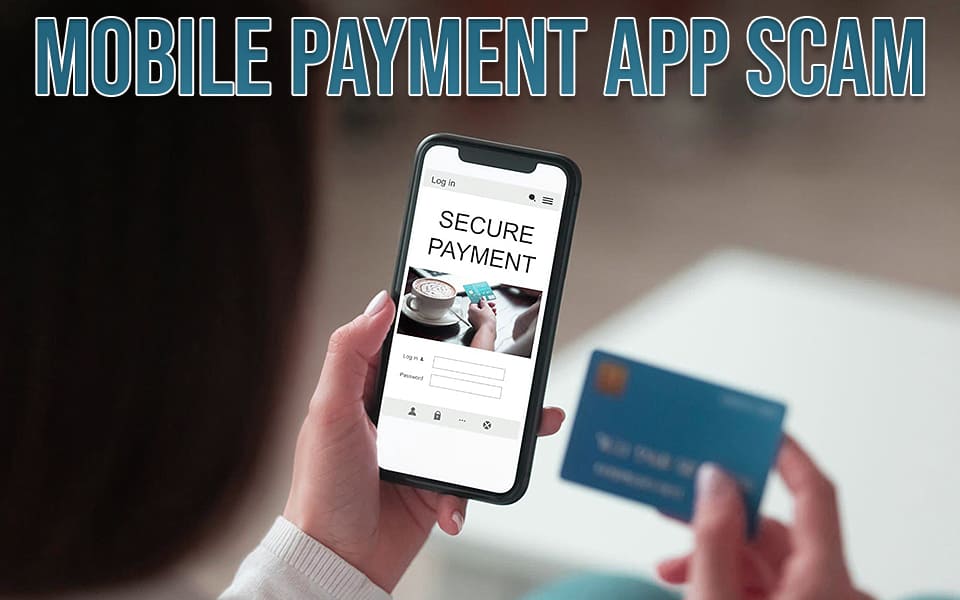6 Ways To Spot A Mobile Payment App Scam

What are Mobile Payment Apps
You’ve probably heard of mobile payment apps that allow for Internet or mobile money transactions. Mobile peer-to-peer payment apps like Zelle, Venmo, Cash App, and PayPal are used by millions of individuals in the US and throughout the world to send money to friends and family, split bills with roommates, and make online purchases. In contrast to 87% of Gen Zers, 88% of Gen Xers, and 65% of baby boomers, 94% of millennials between the ages of 24 and 39 reported using mobile payment apps in a 2020 NerdWallet study.
How to Use Mobile Payment Apps
You must first download and register for the mobile payment app. You’ll need to decide on a means of payment or a source of money, such as a bank account, debit card, or credit card. Money can be sent and received after the account has been created. Money sent to you doesn’t immediately appear in your bank account. Your account balance in the app has increased.
P2P apps are intended to make financial transactions between individuals who are acquainted and trusted, such as sharing the bill at a restaurant or paying a roommate’s energy bills, simpler. Even more conventional banking services, like debit cards and routing numbers, have been introduced to certain apps. However, payment app providers sometimes don’t offer the same fraud safeguards as traditional banks and credit cards.
Scammers have altered their strategies to take advantage of the instant and sometimes anonymous access to cash that these apps allow as users become more familiar with them. Many scammers may now request that money be given via a P2P app rather than a gift card, which has long been a favorite of scammers.
The majority of P2P apps advise customers to avoid using P2P payments to purchase products or services. Even a lawful transaction can go awry if the recipient’s phone number or name is misspelled, resulting in cash being sent to the wrong person. The funds are most likely lost after they are moved.
Understanding Mobile Payment Scams
Mobile Payment Scams have a range of strategies to trick victims into disclosing personal information, financial information, or money, which leads to monetary loss and security breaches.
Mobile payment fraud can cause large financial losses, identity theft, and other forms of fraud. Users should be cautious when receiving unwanted communications or offers to protect themselves from these frauds.
Some scammers can attempt to trick you into paying them cash using a mobile payment app. That’s because they are aware that once you do, it will be challenging for you to get your money back.
Scammers may pose as a loved one who is in need and request money from you in an emergency. Others may claim that you have won a prize or sweepstakes but must pay a fee to claim it.
If you use a mobile payment app to transfer money, bear the following in mind:
- Never transfer money to collect a prize or contest prizes.
- Give no one who contacts you your account information.
- Use a PIN or two-factor authentication to secure your account.
- Verify the recipient’s details carefully before submitting any payments to ensure that you are giving money to the correct individual.
- Make sure the request is coming from the person you know, not a hacker who has gained access to their account if you receive an unexpected request for money from them.
Here are some ways to spot a mobile payment scam:
- Deceptive Communication: Scammers frequently begin contact through unwanted texts, emails, or phone calls, pretending to represent reputable payment apps or financial organizations. These messages may provide promotions, special bargains, or security alerts to entice consumers to take action.
- Urgency and Fear: Scammers utilize a sense of haste or panic to drive consumers into making fast judgments. They may claim that their accounts have been compromised, that transactions are pending, or that immediate action is necessary to avoid fines.
- False Offers: To lure people, scammers promise exaggerated prizes, discounts, or financial benefits. These offers look too good to be true and are designed to attract victims into disclosing personal information or paying a fee upfront.
- Impersonation: Along with other schemes, fake mobile payment apps that closely mimic legitimate ones are built. These bogus programs may use similar names, logos, and user interfaces to fool users into installing them, granting thieves access to sensitive data.
- Phishing: Scammers employ phishing emails and texts to deceive consumers into disclosing personal and financial information. These emails ask users to provide their passwords, credit card information, or other sensitive information by linking to fake websites that look legitimate.
- Unauthorized Transactions: Scammers may acquire access to a user’s mobile payment app account and execute illicit transactions or transfers. The victim may suffer considerable financial loss as a result of these transactions.
How to Proceed if You Have Already Paid a Scammer
Here’s how to notify the mobile payment apps if you discover fraudulent payments or believe you paid a fraudster.
- CashApp: For the quickest service, CashApp suggests speaking through their app. Open the app, go to your profile, and choose Support to accomplish this. You may also contact support by dialing 1 (800) 969-1940 or visiting cash.app/help.
- Venmo: For the quickest assistance, Venmo suggests talking through their app. Open the app, go to your profile, and select Get Help to accomplish this. Additionally, you can contact Venmo via email using their contact form or by phone at 1 (855) 812-4430.
- PayPal: Call PayPal at 1 (888) 221-1161 or submit a report online through the PayPal Resolution Center.
Conclusion
Mobile payment apps have transformed how we manage financial transactions by providing ease and efficiency for peer-to-peer money transfers, bill splitting, and online purchases. The widespread use of apps like Venmo, Cash App, and PayPal demonstrates their incorporation into daily financial dealings, especially among young people. However, like with every technical progress, the advantages are accompanied by possible hazards.
While these applications are quick and convenient, users should be careful of scammers who take advantage of the platform’s quickness and anonymity to deceive consumers into transferring money or personal information under false pretenses. Scammers use deceptive tactics including phishing and impersonation, as well as unlawful behavior and fraudulent promises. Recognizing these techniques and following recommended practices for utilizing mobile payment apps are critical for protecting one’s financial and personal security.
To avoid mobile payment scams, use care when dealing with unwanted messages, be skeptical of offers that appear too good to be true, and use additional security measures such as PINs or two-factor authentication. Before conducting transfers, verify payment information and the authenticity of requests. If a scam is suspected or fraudulent conduct has happened, it is critical to act quickly and according to the customer service guidelines of the particular app.
User education, awareness, and responsible usage are critical in ensuring that the advantages of these apps continue to exceed the hazards in the quickly expanding world of mobile payment technologies. As the digital financial landscape advances, a proactive attitude to security and a keen eye for possible frauds will enable users to take advantage of mobile payment apps while keeping their cash and personal information secure.
FAQ
What are some common signs of a mobile payment app scam?
Unexpected requests for money offers that appear too good to be true, urgent messages alleging account concerns, or unsolicited contacts requesting personal or financial information are examples of common warning flags.
How should I respond if I suspect a scam or have fallen victim to one?
It's critical to take immediate action if you believe you have been defrauded or suspect fraud. Utilize authorized means, such as the app itself or the specified contact information, to get in touch with the customer service of the relevant mobile payment app. To safeguard your account and limit any possible harm, report the fraudulent activity and abide by their instructions.
What risks are associated with unauthorized transactions?
Users of mobile payment apps may fall prey to scammers who enter their accounts and carry out illicit transfers or transactions, leaving the victim with large financial losses.
What can mobile payment app providers do to prevent scams?
Mobile payment app providers should set up robust security measures, increase user education about scams, increase customer care for scam-related concerns, and invest in technology to identify and halt fraudulent activity on their platforms.
Remember that staying informed, remaining vigilant, and following best practices is key to protecting yourself from mobile payment fraud and enjoying the benefits of these convenient financial tools.
“Stay Informed and Protected. Explore Our Scam Reviews Now to Safeguard Your Finances and Personal Information.”


 4.0/5.0
4.0/5.0 3.5/5.0
3.5/5.0
 2.9/5.0
2.9/5.0